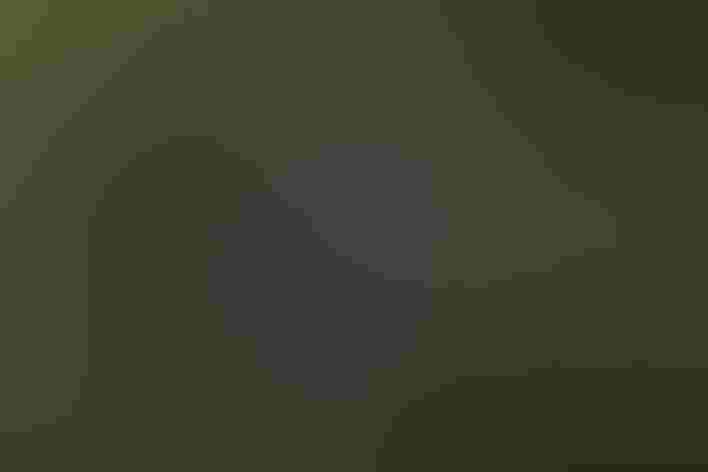Little Blue Heron
At a Glance
Despite its different last name, the Little Blue Heron is probably a close relative of the Snowy Egret. It looks much like a Snowy when it is young, but molts to a dark slate-blue plumage as an adult. Generally wary and hard to approach. Nests in colonies, sometimes of this species alone; in large mixed heronries, Little Blues tend to nest along the edges. Some of its largest colonies are in the lower Mississippi Valley, where it often nests in association with Cattle Egrets.
All bird guide text and rangemaps adapted from Lives of North American Birds by Kenn Kaufman© 1996, used by permission of Houghton Mifflin Harcourt Publishing Company. All rights reserved.
Category
Herons, Egrets, Bitterns, Long-legged Waders
Conservation
Low Concern
Habitat
Coasts and Shorelines, Freshwater Wetlands, Lakes, Ponds, and Rivers, Saltwater Wetlands
Region
California, Eastern Canada, Florida, Great Lakes, Mid Atlantic, New England, Plains, Rocky Mountains, Southeast, Southwest, Texas
Behavior
Direct Flight
Population
1.100.000
Range & Identification
Migration & Range Maps
After nesting, adults and young disperse from colonies in all directions, including northward. Some may move well to the north in late summer before migrating south. Banding returns show that some migrate as far as South America, although some also remain in southeastern United States in winter.
Description
25-30" (64-76 cm). W. 3'5 (1 m). Adults solidly dark blue-gray, tinged more red-violet on head and neck; bill blue with black tip. Smaller and more compact than dark morph of Reddish Egret, with shorter bill and legs, different bill color. Immature all white at first; very much like young Snowy Egret but usually gray (not yellow) on bare skin near eye, legs dull greenish. Dusky wingtips may be visible in flight. Usually feeds more slowly and methodically than Snowy Egret. When molting to adult plumage, may be patchy white and blue ("calico" phase).
Size
About the size of a Heron, About the size of a Mallard or Herring Gull
Color
Black, Blue, Purple, White
Wing Shape
Broad, Fingered, Long
Tail Shape
Short
Songs and Calls
Usually silent; squawks when alarmed. Various croaks and screams at nesting colonies.
Call Pattern
Flat, Simple
Call Type
Odd, Raucous
Habitat
Marshes, swamps, rice fields, ponds, shores. In North America most numerous on fresh waters inland, around river swamps and marshy lakes. Also feeds in wet meadows and even dry fields. Less commonly feeds in salt water, although it may favor such habitat in the Caribbean. Nests in trees or in dense low thickets near water.
Sign up for Audubon's newsletter to learn more about birds like the Little Blue Heron
Behavior
Eggs
3-5, sometimes 1-6. Pale blue-green. Incubation is by both sexes, 20-23 days.
Young
Both parents feed young, by regurgitation. Young may climb out of nest onto nearby branches after 2-3 weeks, are capable of short flights at 4 weeks, become independent at 6-7 weeks.
Feeding Behavior
Usually slow and methodical in its foraging, walking very slowly in shallows or standing still waiting for prey to approach. May feed in shallow water or on shore, also in grassy fields.
Diet
Mainly fish and crustaceans. Diet quite variable. Eats mostly small fish (including larger ones than those favored by similar-sized Snowy Egret) and crustaceans, including crabs and crayfish. Away from water eats many grasshoppers and other insects. Other food items include tadpoles, frogs, lizards, snakes, turtles, spiders.
Nesting
Breeds in colonies. Male establishes small territory within colony and displays there, driving away other males. Displays by male include neck-stretching and bill-snapping; pairs in courtship may nibble at each other's plumage, and cross and intertwine necks. Nest: Site is in a tree or shrub, usually 3-15' above ground or water, sometimes up to 40' high. Nest (built by both sexes) is a platform of sticks, varying from flimsy to substantial, with depression in the center.
Climate Vulnerability
Conservation Status
Because of its dark plumage and lack of long plumes, this species was not a major target for the plume hunters that decimated the populations of most of the white egrets and herons in the late 1800s. During the 20th century, Little Blue Heron has extended its range northward and increased in population in many areas.
Climate Threats Facing the Little Blue Heron
Choose a temperature scenario below to see which threats will affect this species as warming increases. The same climate change-driven threats that put birds at risk will affect other wildlife and people, too.













